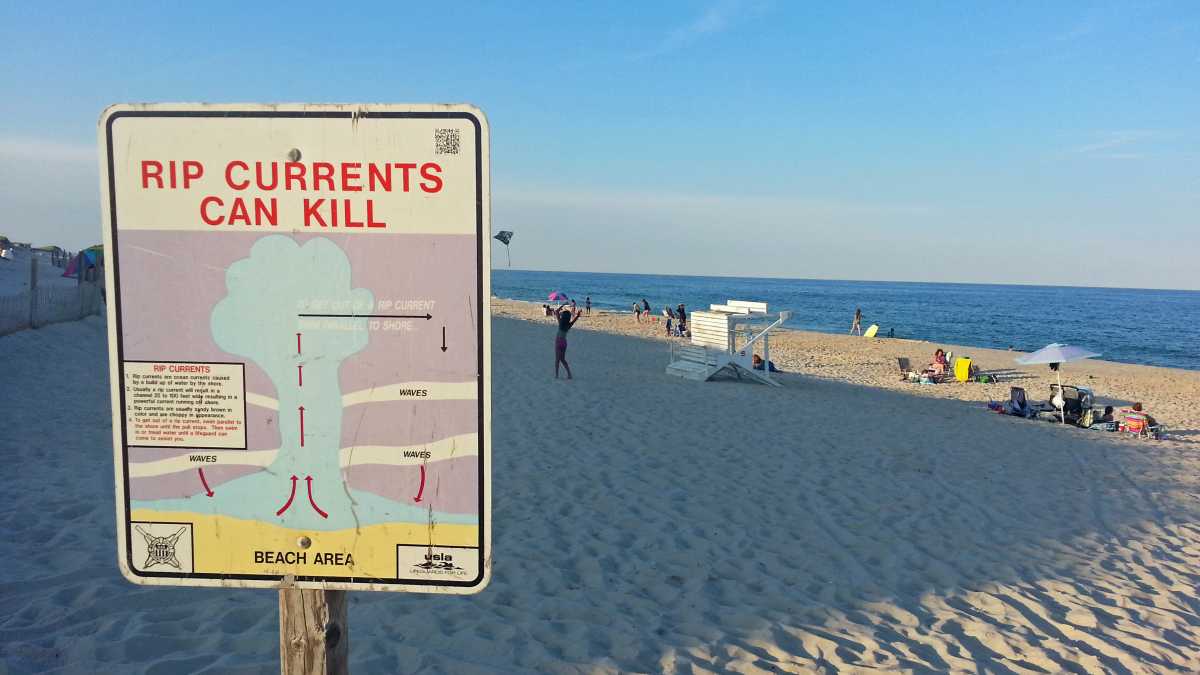Moderate risk of rip currents today at the Jersey Shore

A sign in Cape May instructs swimmers caught in a rip current to swim parallel to the beach to escape. (Alan Tu/WHYY)
There is a moderate risk of rip currents today, forecasters say.
A moderate risk means that swimmers should expect stronger or more frequent rip currents and always have a flotation device and swim only in life guarded areas.
The rip current risk will be highest toward later in the afternoon due to the southerly wind increasing to 20 miles per hour and the tide cycle moving toward the lower half of the cycle.
The forecast calls for a low risk for tomorrow and Saturday before possibly increasing for Sunday into early next week due to long period swells. The National Weather Service says the while there’s “little doubt” that the swell will increase at the Jersey Shore, “just how much is the question.”
“Swimming and wading dangers will probably increase. For now we’re anticipating a moderate or greater risk for Monday through Wednesday and possibly starting Sunday,” the forecast says.
Rip currents are powerful channels of water flowing quickly away from the shore, often occurring in low spots or breaks in the sandbar and in the vicinity of structures such as groins, jetties, and piers.
According to NOAA, here’s how to identify a rip current:
A channel of churning, choppy water.
An area having a notable difference in water color.
A line of foam, seaweed, or debris moving steadily seaward.
A break in the incoming wave pattern.
Rip current speeds vary, with an average pull of 1-2 feet per second, but some can move as fast as 8 feet per second, which is faster than an Olympic swimmer, according to NOAA.
Your first line of defense is to check the surf forecast before you head to the beach. NOAA updates the forecast daily. Watch this informative NOAA video on rip current safety.
If caught in a rip current, NOAA advises:
Stay calm.
Don’t fight the current.
Escape the current by swimming in a direction following the shoreline. When free of the current, swim at an angle—away from the current—toward shore.
If you are unable to escape by swimming, float or tread water. When the current weakens, swim at an angle away from the current toward shore.
If at any time you feel you will be unable to reach shore, draw attention to yourself: face the shore, call or wave for help.
WHYY is your source for fact-based, in-depth journalism and information. As a nonprofit organization, we rely on financial support from readers like you. Please give today.

